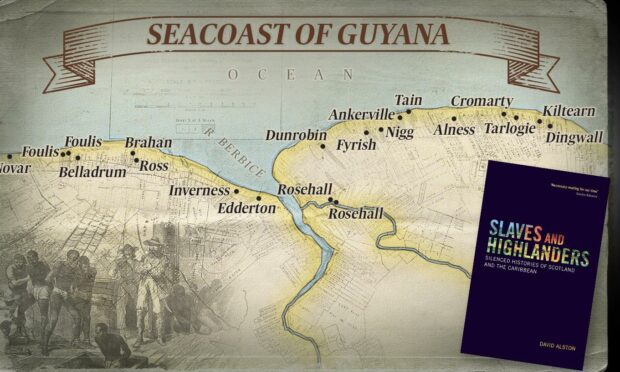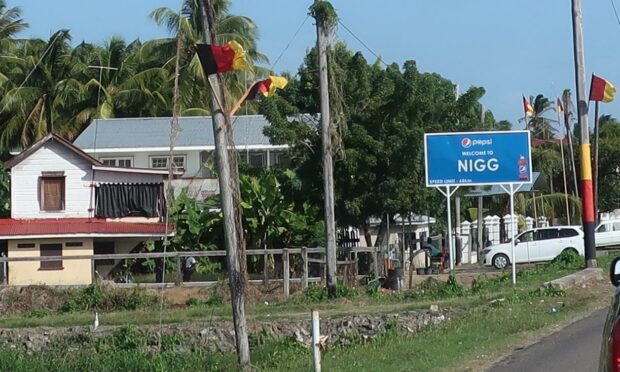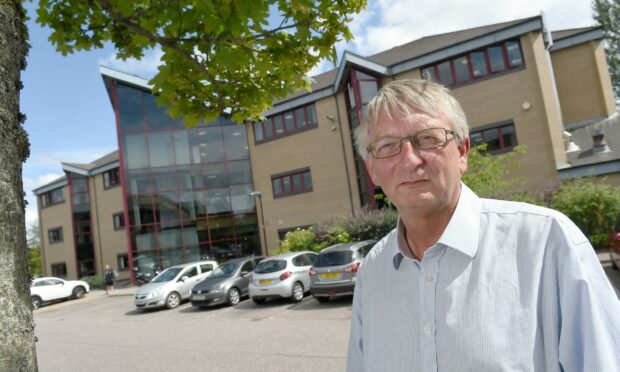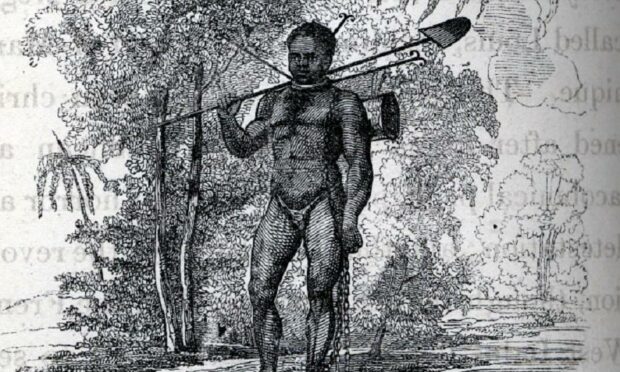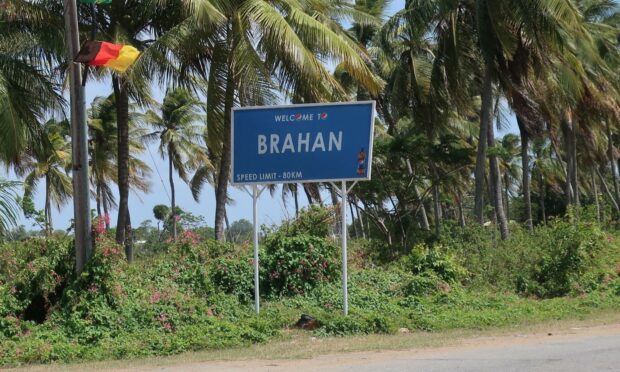Scotland should apologise and help repair the damage caused by its historic links to the slave trade, according to a Highland historian.
Scots were connected to all aspects of slavery.
They were owners of plantations where slaves worked, captains of slave ships and involved in auctioning men and women captured in Africa.
A new book ‘Slaves and Highlanders’ by David Alston focuses on Highlanders who were involved in or benefited from the brutal trade.
The former Highland councillor and NHS Highland chairman believes the Scottish Government and other public bodies should make reparations.
Apology for slavery links should be ‘first stage’ of response
As well as compensation for African and Caribbean countries, he wants support to come from future cultural and trade partnerships.
“Recognition and apology from the Scottish Government is the first stage,” he said.
“We have to acknowledge the truth and take an appropriate responsibility for the past.
“We have to engage in discussions about reparations with countries in the Caribbean and Africa.
“If you want to take pride in the past in your community and your country you also have to accept responsibility for the less savoury parts.
“That’s still very difficult for a lot of people in Scotland and the Highlands.”
He added: “The entanglement with slavery permeated society. Asking who benefited from slavery is like asking who benefited from North Sea oil.
We have to acknowledge the truth and take an appropriate responsibility for the past.”
Dr David Alston
“Benefits from slavery, and the trade that came with, fuelled the Scottish industrial revolution and funded educational institutions.
“No one today bears individual responsibility for the horrors of the slave trade.
“It’s about accepting our communal responsibility.”
Slavery connection could be part of independence debate
Dr Alston also thinks acknowledging the link to slavery could be part of future debate on Scottish independence.
“There have been suggestions that Scotland could become independent and walk away from responsibilities that arise from being part of the UK.
“I think that would be morally reprehensible.
“In arguments being made for independence there needs to be a commitment to shouldering these responsibilities.
“This recognises that Scotland was proportionately more involved in the slave trade and plantations than was England.”
The book highlights the impact on land ownership in the Highlands from slave money was substantial.
The Highland influence on places like Berbice in Guyana is also evident.
Plantations that used slaves were given names such as Belladrum, Inverness, Dunrobin, Nigg, Tain, Alness, Kildonan, Cromarty and Dingwall.
Inverness Royal Academy, the Royal Northern Infirmary and Fortrose Academy are among institutions which received money from the slave trade.
Plantation records should be made available
Dr Alston believes that reparation is not just about money.
He said: “It’s about building relationships and partnerships.
“We have been comfortable in the past with having trade arrangements and partnerships with what are perceived as ‘white colonies’ like Canada, Australia and new Zealand.
“We need to have that special relationship for quite different reasons with other former colonies of the Caribbean and in Africa.”
He also wants to see plantation records released online to provide detail on how slaves were used.
“So much of the history of people who are the descendants of enslaved Africans is here.
“That’s where the details is. It needs to be digitised and made available free online.”
He praises work by Glasgow University building academic links with the University of the West Indies in Jamaica.
Also Aberdeen University which has made a commitment to investigate the legacy of historic slavery in the university and north-east Scotland.
This includes the appointment of a lecturer in the history of slavery.
It will look into the origins of the Dick Bequest, which Dr Alston has also researched.
Calls for ‘repatriation’ of funds
He and fellow historian Donald Morrison found that James Dick, from Forres, made his fortune from slavery.
The bequest was set up to pay rural schoolmasters in Aberdeenshire, Banff and Moray. It now provides grants for teacher training and school equipment.
The Centre for Reparation Research (CRR) at the University of the West Indies has supported calls for the Dick funds, worth £1.7 million, to be “repatriated” to Jamaica.
CRR director Prof Verene Shepherd is also seeking a “reparatory justice conversation” between the Scottish Government and the governments of the Caribbean.
She said: “I would like to see more Scottish people of conscience join the lobby for Scotland to own up to its part in the African Holocaust (the Maangamizi), issue a meaningful apology and commit to repair through reparation.”
Moray councillors will decide how to deal with the Dick Bequest at an education, children and leisure committee next week.
A Scottish Government spokesman said: “We can never, and should never, ignore or seek to hide the difficult aspects of our country’s history and we acknowledge Scotland’s complex past, including our involvement in the slave trade.
“Those who came to Scotland through the slave trade and empire and their descendants have made an indelible contribution to our country that should be recognised.
We can never, and should never, ignore or seek to hide the difficult aspects of our country’s history.”
Scottish Government spokesman
“We welcome the increasing awareness and public recognition of that role, as well as the recognition of those who opposed slavery and campaigned against it such as Dr David Livingstone.
“We must focus on making sure we deliver positive outcomes for the minority ethnic people of Scotland today.
Projects have highlighted links to slavery
“That is why the Scottish Government is sponsoring The Empire, Slavery & Scotland’s Museums project.
“This is an independent review of how Scottish museums and galleries can better address the legacies of slavery, empire and colonialism at every level.
“We look forward to its observations and conclusions, which we will study closely.”
Some recent projects in the Highlands have helped highlight the links to slavery.
People in Cromarty have raised money to support a development centre at a church in Guyana.
This is helping to begin a free school lunch programme for some of the poorest children in the area
Last year a Gaelic drama was premiered at the Blas Festival based on the life of Eliza Junor, the mixed-race daughter of an estate owner in Guyana that used slave labour.
Money raised from the film went towards a crowdfunding campaign for children in Guyana.
Dr Alston welcomes initiatives by the University of the Highlands and Islands on the subject.
He also hopes Inverness Castle, which is being redeveloped as a major tourist attraction, could help bring the area’s connections to slavery to more people.
New book covers an ‘important issue’
The university has published a number of works on slavery and research and curriculum design has been carried out on the subject.
A spokeswoman said: “This book covers an important issue.
“Understanding our past – including these uncomfortable aspects – is important to the university partnership.”
Fiona Hampton, project director of the inverness Castle redevelopment, said the issue of slavery has been discussed, but no details are available yet how it will fit into the project.
More on this subject:
